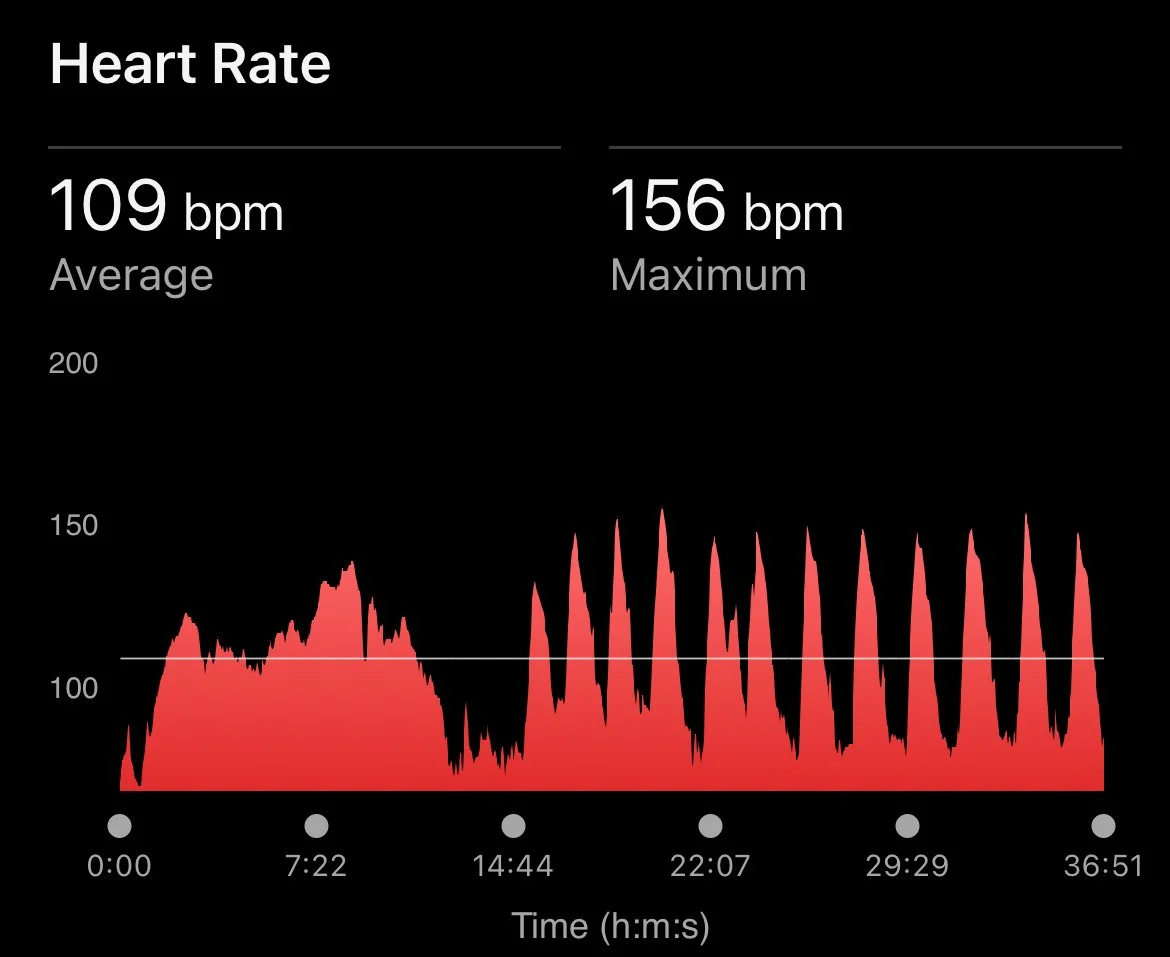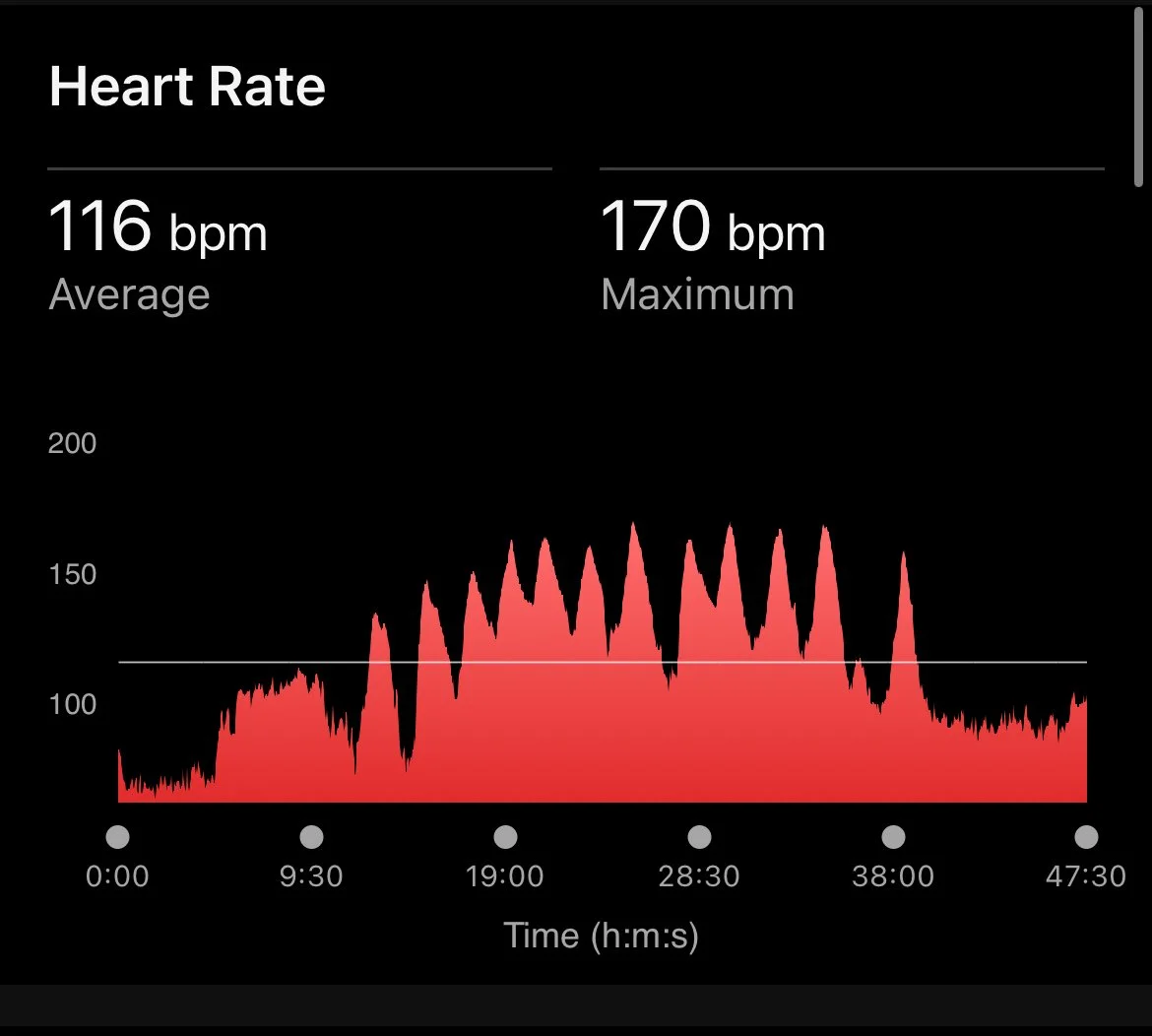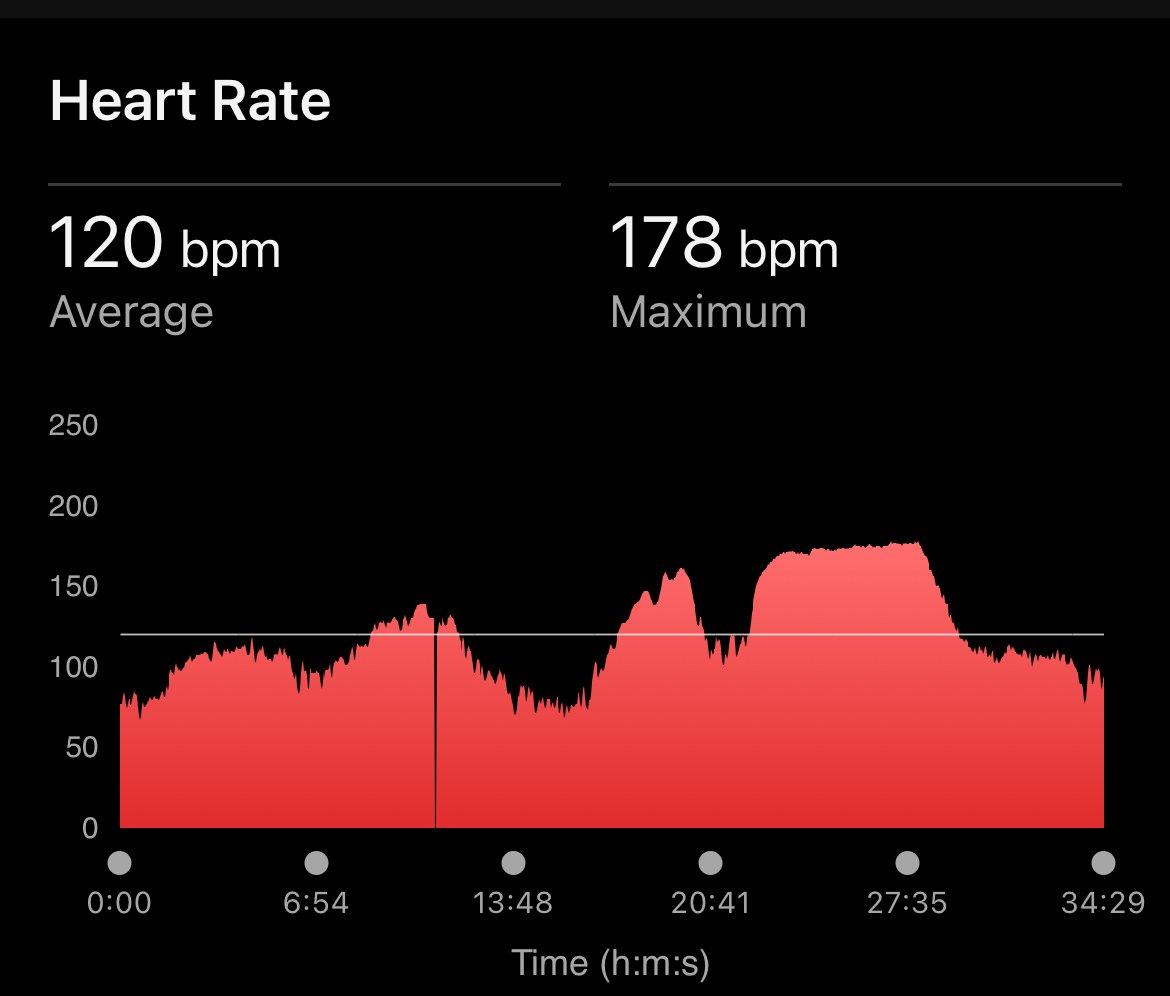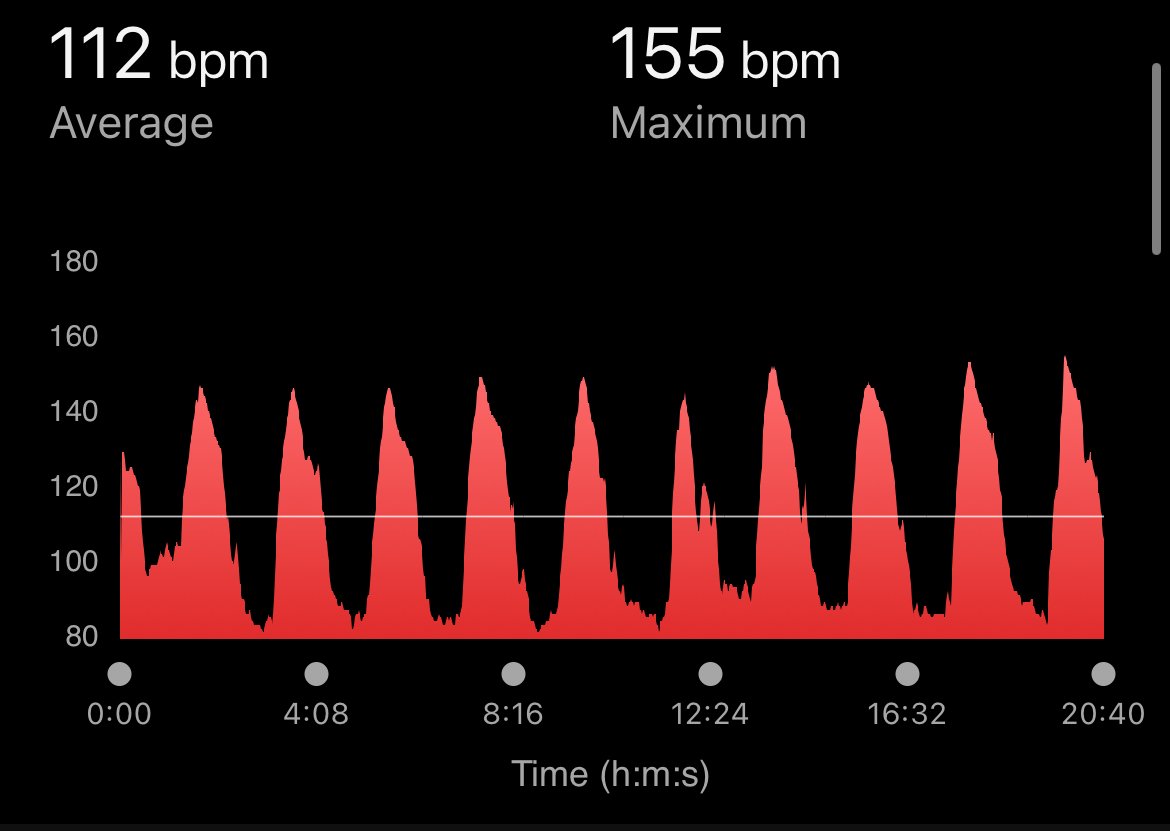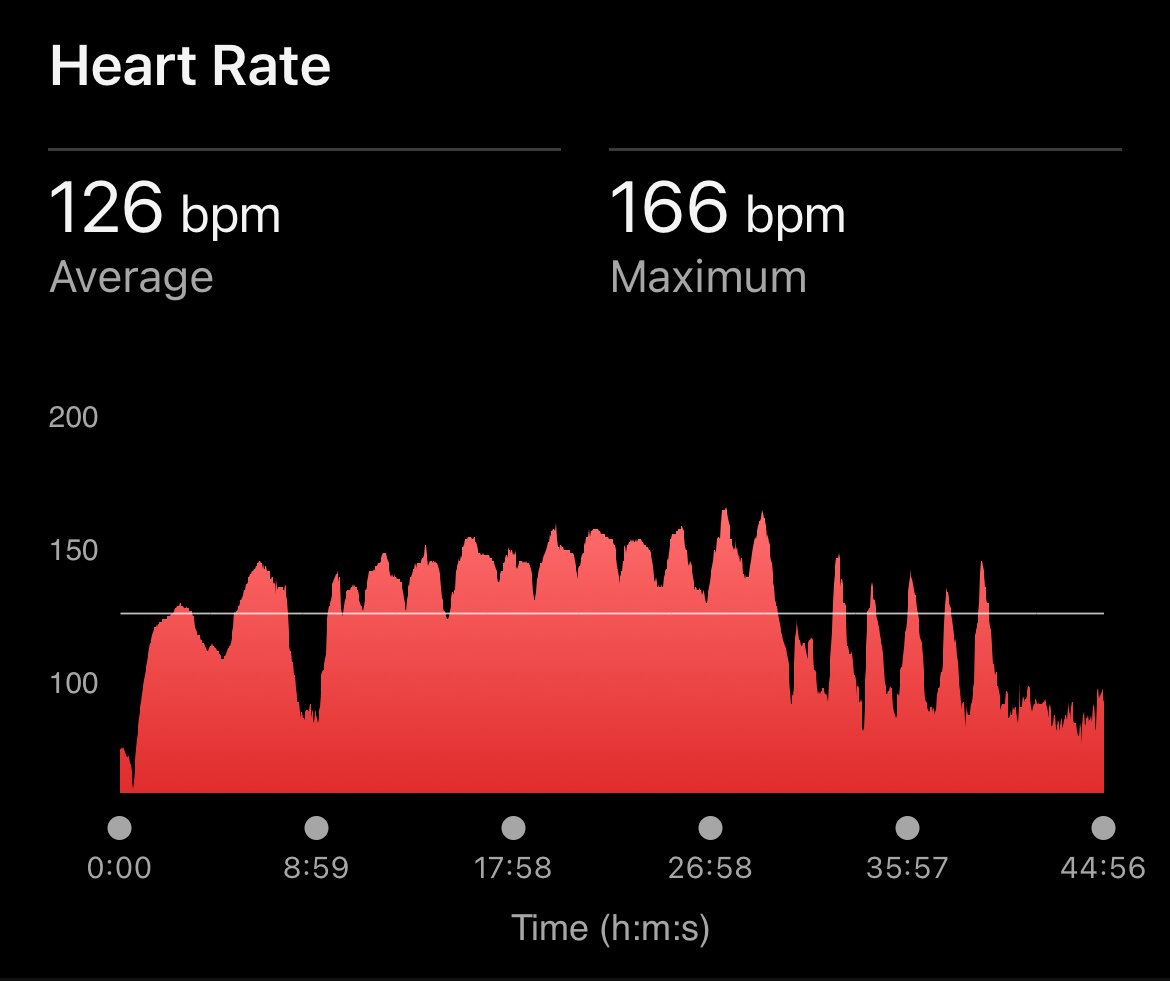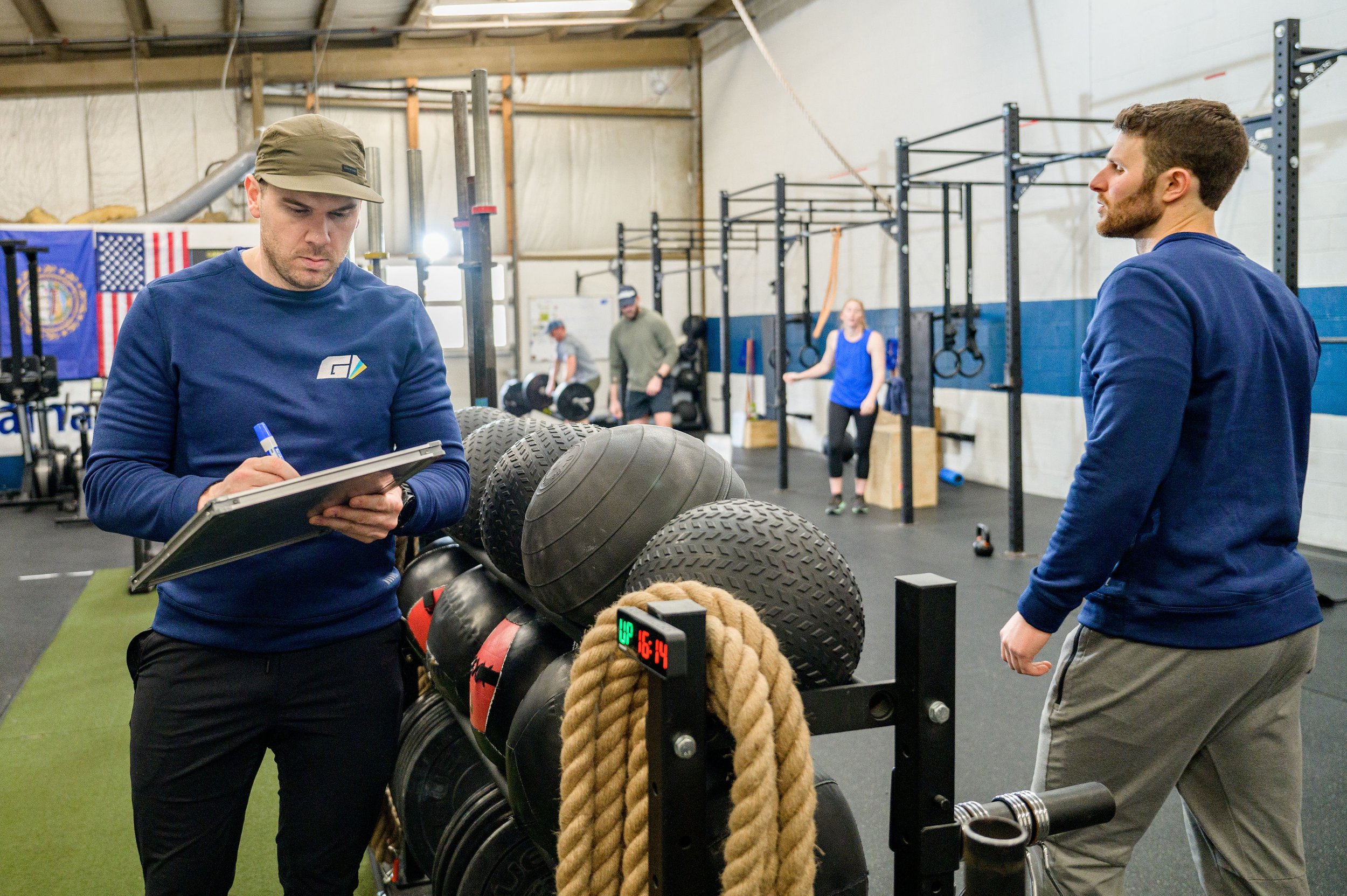
Welcome to the GAIN Blog
The blog is updated Monday-Friday. Tune in for posts and discussion about health, fitness, nutrition, training experiments and reflection. We share articles, videos and more. We post the link to our Instagram story every day, make sure to follow along there to never miss a post.
How to start
Potential members start with our 3-session trial. This serves as an opportunity to meet the coaches and see how we do things at GAIN. Our individualized, feels sort-of-like a group, but isn’t really a group, vibe is different, and unlike any other gym you’ve been to.
On your first visit you work closely with a coach doing our Intro Workout. This gives us an opportunity to go over some finer details like getting organized and breathing and seeing how much range of motion and stability your body has. We talk about injuries, training history and what you want to get out of your gym time.
Regardless of your fitness level and experience, we want you leaving the gym after that first session feeling as though you could have done more. Our saying is, we can write hard workouts, but need to prove that one day 1. We want you to build a new habit you can stick with, easing in is key. With our consistency over intensity mindset, many self identifying “not a gym person” has turned into a dedicated member who have been with us for nearly a decade.
You’ll learn a whole bunch of new movements and lingo, if you’re a newbie to the gym it can be a bit overwhelming. Just know that we’re aware of this, and try to take it slow and not overload you with gym jargon. On the first day we primarily focus on learning and breaking down the squat pattern, the push up and ring row and some of our core training drills.
By the second workout, we’re ready to introduce some more movements and will do some conditioning (cardio) and get introduced to some of our favorite cool-down mobility drills. This workout focuses on pressing and pulling with the upper body, along with some single leg movements.
On the last workout of the trial, you’re learning and working on the hinge pattern. This can be a tricky one, but is important for everyone to learn. We revisit some movements from the previous two workouts here if needed. This will feel like a bigger workout for most, because we usually give you more to do on the third day as your body is starting to adapt to some new movements.
All in all, the 3-Session Trial is a crash course in all things GAIN. Learn our favorite exercises, get your movement broken down by an experienced coach and learn how to move better, feel more connected and get a plan that’s tailored to what you need and want to accomplish.
Justin Miner
@justinminergain
My First Run
Reposted from April 2020…
Before opening GAIN, I hit a serious rough patch. I’d spent a year cautiously training—trying not to aggravate my back and hip—followed by a full year off from working out altogether. As a former athlete with no team, no goal, and chronic pain, I had nothing to train for. That mix of lost motivation and fear of making things worse kept me away from the gym entirely.
Running had always hurt. In college, we’d do captains’ practices down Hills Beach Road, and every single time, I’d strain a groin muscle. I’d be limping for a couple of days before it faded—just in time for the next running workout to set me back again.
Despite how much I hated it—how uncomfortable and boring it felt—I remember thinking: Someday I should run a marathon. It didn’t make sense, but I figured anything that difficult and miserable might be worth overcoming.
That thought disappeared for years.
Then one Saturday morning in the spring of 2014, something changed. I had recently started getting back in the gym. I was managing my injuries, spending real time stretching and foam rolling. For the first time in a long while, I wasn’t training to compete—I was training just to be human again. To move well. To stop hesitating out of fear.
That meant I had to learn to run without getting hurt.
So I dove in: I studied running mechanics, explored the Pose Method, and treated running as a skill—not a race. I didn’t like it, but I believed I should at least be capable of it.
That Saturday, Hannah and I left my apartment in Hampton with one goal: run 1.2 miles to the Secret Spot for breakfast burritos and iced coffee. Solid motivation.
The whole way there, I thought about how to lean and fall to create momentum, how to let my feet just kiss the pavement and lift them off quickly. By the time we arrived, my calves were seized up, my achilles were aching, and the bottoms of my feet were screaming.
We ate our burritos watching cars pass by on their way to the beach. We walked home. That became our summer routine. It was the first time I ever consistently ran—week after week, every Saturday.
In September, we ran down to the Secret Spot one morning and found it boarded up—closed for the season. And just like that, the ritual ended. I forgot about running again for a while.
It wasn’t until two years later, after we got Clementine, that I discovered trail running—and finally started to call myself a runner.
—Justin Miner
@justinminergain
Seventeen years to four plates
repost from January 2024…
2005
I back squatted for the first time at Great Bay Athletic Club. I’d been reading about squats in bodybuilding magazines I bought at the grocery store and finally decided to give it a try.
2006
As a high school senior, I hit 405 pounds on the back squat with a couple of training partners. The depth was questionable, and I’ve wanted to do it right ever since.
2007–2008
I kept squatting heavy—back or front squats—every week without fail. Never missed a training day.
2009–2011
In college, I goblet squatted and deadlifted a lot. There was only one squat rack in the gym, so we didn’t use it often.
2012–2014
My back hurt all the time. I kept getting injured. I started to believe back squats were dangerous, irresponsible, and a waste of time. I swore them off.
2015–2016
Maybe they weren’t dangerous… maybe I just moved poorly and had terrible mobility. I started from scratch—relearning how to squat and working hard on improving my range of motion.
2017–2019
I discovered ultrarunning and rarely lifted weights. Squatting wasn’t a priority.
2020
Time to get strong again. I followed a training cycle and built back up to a 305 squat—my first time over 300 in more than a decade.
2021
I wanted to build on that progress and trained hard in the fall. I hit 355 pain-free. That was a big deal.
2022
This was going to be the year I made a run at 405.
December 2022
I got hurt squatting. Then we had a baby. Training took a back seat.
March 2023
I started physical therapy, spent extra time on breathing, mobility, and warm-ups. I squatted light once a week through May, slowly rebuilding control and confidence. I hit 305 easily in May and went into running season feeling good about my back.
August 2023
After finishing a mountain ultra, I leaned into kettlebells. I trained consistently, got in a ton of high-quality reps, and enjoyed the simplicity of doing the same thing every day.
September 2023
A gym member inspired me to squat every day. I committed to a program—40 squat workouts in a row.
November 2023
I wrapped up the Easy Strength program feeling strong. I was tempted to go for 405 but reminded myself to be patient.
I hit a clean 355. A few weeks later, I tried 365 and it moved well. It looked so solid on video that I made the jump to 395—and got it.
December 2023
The plan was to do 3 singles at 315 with long pauses. The third one felt easiest of all, with a 4–5 second pause. I went up to 345. Easy.
Then 375. Still easy.
I loaded four plates: 405. And I got it.
Most importantly—nothing hurt.
I’m pumped. It’s been a 17-year journey of fighting with, and trying to master, the squat.
There are two points I want to make:
If you want to get better at something, you have to commit to it.
I’ve only run a handful of times since August. I had to put other parts of my fitness on hold to chase this. You can’t do everything at once.If there’s something you want to do—but don’t think you can—you might just need more time.
There were multiple times I thought I’d never back squat again. I didn’t need to give up. I needed more patience. More time. More reps.
—Justin Miner
@justinminergain
Justin Miner
@justinminergain
Squat fundamentals
We could all use more practice with the fundamentals. Check out these key teaching points we use at GAIN to help upgrade your squat mechanics:
Get Organized
Start from the ground up—literally.
“Screw” your feet into the floor by turning your heels slightly toward each other (imagine spinning your kneecaps away from each other). This creates external rotation at the hips and gives you a stable base before you even move.
Find Your Foot Pressure
After organizing your hips, you might feel pressure shift to the outside of your feet. That means you’ve overdone it.
Instead, aim to distribute your weight evenly—right in the middle of your heel and the ball of your foot. At the gym, we call this finding your midfoot. It takes some practice, but after a few reps, it’ll start to click.
Back then Down
Break the squat into two parts:
Push your hips back—like you’re reaching your butt to a wall behind you.
Then let your chest angle forward and bend your knees.
This sequence helps engage your hips properly and reduces stress on your lower back and knees. It might feel awkward at first, but it’ll soon become a fluid movement.
Stay Strong at the Bottom
Keep that midfoot pressure.
No collapsing knees—push them apart like magnets repelling each other.
As you stand up, drive through the middle of your foot, like you’re trying to break the floor beneath you.
If your heels pop up, you’re too far forward—lean back slightly.
If you’re tipping backward, get your toes down and re-center.
Finishing at the Top
As you rise, keep your knees pushed out.
At the top, squeeze your glutes to finish the rep, open up your hips, and set yourself up for the next one.
Breathing Basics
For bodyweight squats, keep it simple:
Inhale as you go down
Sharp exhale as you come up
Yes, there’s a time and place for breath holds and bracing—but for now, focus on rhythm and control.
I hope one of these cues makes something click for you. There’s always room to refine the fundamentals.
—Justin Miner
@justinminergain
Friday Thoughts 88
Greetings! Welcome to this week’s edition of Friday Thoughts. Let’s dive in.
Vacation
The Miner family is headed on vacation to the White Mountains next week for our annual summer trip. My goals are to climb the Rock Pile a freakish amount of times, double doses of ice cream, plopping rocks in the river, Storyland and building my—I mean Elliot’s—new Imperial TIE Fighter LEGO set…Don’t tell him yet, it’s a surprise!
Riley
While I’m away next week, long-time and well-known member, Riley, will be covering some coaching duties at GAIN. If you didn’t know, Riley has a fitness instructor background and is thrilled to be getting more involved. Make sure to tell Riley she’s awesome the next time you see her!
FAST MILE Summer
This was week 5 of the Fast Mile Summer Project. I skipped the first session since I’m coming off the race, and I did Day 2— 600m repeats— yesterday at the track. It was hot! I ran a little faster than target pace on the first one, and pushed a little harder each effort. I was aiming for 6 sets, but after the fourth, and my fastest of the day, I had enough. I skipped the last two and headed to the beach to jump in the ocean.
Have a great week!
—Justin Miner
@justinminergain
Choose your own adventure
I’m getting better at writing workout programs.
Not exactly shocking—I’m obsessed with this stuff.
I’ve written hundreds of programs over the years. In college I’d zone out during chemistry class, daydreaming about owning a gym and scribbling workouts for imaginary clients instead of paying attention to formulas (or whatever it is you’re actually supposed to learn in chem class). Since then, I’ve had plenty of practice.
But there’s one thing I always come back to—and I make sure to mention it in every initial consultation:
I can write a great 4-week program, but I’ll never be able to predict how you’re going to feel four Wednesdays from now.
Maybe you slept poorly. Maybe you crushed a presentation at work. Maybe you’re traveling, stressed, or had an extra cup of coffee. The reality is: how you feel day-to-day is unpredictable, and it’s unrealistic to expect every session to go exactly as planned.
That’s why over the years, I’ve built flexibility into my programming. The two tools that have been most effective?
Set ranges (i.e., 5-8 reps of db bench press)
“Pick one of the following” sections
Giving you options doesn’t make the program less structured—it makes it more responsive. It encourages you to pause and ask:
What do I need today?
How am I feeling?
What’s going to move me forward without crushing me?
It sounds simple, but most people don’t take time to reflect like that in the gym. The more you do, the more effective your training becomes.
As your training age increases, your program can become more of a “choose your own adventure.” The key is not to always pick the hardest or the easiest route—but the right one for that day.
—Justin Miner
@justinminergain
Slow and steady
The final climb of the Loon Mountain Race was tough! It was incredibly steep. I saw a lot of interesting strategies and techniques for getting up the mountain.
One runner of particular note would sprint 5 or 6 steps, and then collapse on all fours to take some big breaths. Once his breathing settled, he would do it again.
All I could think was: doesn’t this guy know that slow and steady wins the race?
It reminded me of people in the gym. The sprinting up the hill is the equivalent of starting at 5 sessions per week, along with a new diet and a 10k step goal. It’s too much, unsustainable but it sure does make you feel like you’re being productive.
I kept my pace, chugging nice and steady and eventually got around this guy. I passed a lot of other people on this section too, because I was keeping it steady. As we say in the gym all the time; consistency and moderation over intensity.
—Justin Miner
@justinminergain
medicine balls: heavier isn’t better
When you're lifting in the gym, we love to see weights go up. Heavier lifts usually mean you're getting stronger—and that's progress we can measure.
But when it comes to medicine ball exercises, more weight isn’t always better. Here’s why:
With movements like goblet squats, deadlifts, and bench presses, the goal is to build strength—your ability to produce force. The more strength you have, the more force you can create. Simple.
But with medicine balls, we’re not just building strength—we’re building power.
Power is how quickly you can apply force. It’s not just about being strong—it’s about being fast and strong. That’s why med ball work like slams, side tosses, and chest passes need to be done explosively. Speed matters.
Using a ball that’s too heavy can mess with your mechanics, slow you down, and actually reduce the power you're able to produce.
So while a 20-pound ball might look impressive, if it makes you move like you’re stuck in mud, it’s not doing the job.
10 crisp, snappy slams with an 8-pound ball > 10 sluggish slams with a 20-pounder.
Heavy is better for strength. Fast is better for power. Keep that in mind the next time you reach for a med ball.
—Justin Miner
@justinminergain
MOnday Check in
Here we are again, happy Monday!
I had a great time at the Loon Mountain Race yesterday. It was as fun and as challenging as advertised. I was able to get up the mountain under my goal time of 90 minutes. I’m really enjoying the shorter distance mountain runs where you can push the pace.
The plan is to go with the flow for training this week. I want to get in the two Fast Mile Summer workouts, and otherwise I’m going to go with the flow to let me body recovery from the race — even though I’m feeling pretty good so far.
It’s going to be another hot week. Get your electrolytes in, drink plenty of water, and drive to the gym with your windows down!
—Justin Miner
@justinminergain
Friday THoughts 87
Greetings! Welcome to this week’s edition of Friday Thoughts. Let’s dive in.
LMR
I’m heading to Loon Mountain on Sunday for the Loon Mountain Race—an uphill race of 6 miles and 3000 feet of vertical gain. I’ve had this race on my radar for a long time and I’m excited to see what it’s all about. I had a few weeks to get ready after sitting out the Mount Washington Road race. The goal was to cram a lot of good training in and I think I accomplish it.
While I had been doing a lot of fast and flat running versus low gear chugging up mountains, it’l be interesting to see how the higher intensity training pays off.
“New” Stuff
We had a lot of people doing some new, and different stuff this week. Particularly with a box and pvc pipe. Well, while it may be new to you — we’ve been tinker with this stuff for a while. This “On Box” position is call the hip lock. It requires timing, coordination, skill and range of motion — plus it’s fun to do.
Stroller Mile
As the 2024 Market Square Day 10k Second Place Stroller Finisher, I can say this is legit. Shout out to the baby for sleeping through the whole thing.
Badwater 135
There are a lot of races that tout themselves as “The toughest race in the country.” I think Badwater is actually in contention for that title. Crazy hot, unrelenting sun and no where to hide. What an impressive finish from this 80 year old!
Have a good weekend, see you next time!
—Justin Miner
@justinminergain
Strategic NOt Heroic
Intensity has its place, but too often, we skip right to it and ignore the consistent effort that drives progress.
That “all-in” mindset might feel good in the moment, but it usually leads to burnout, not long-term results.
We’re here to build something sustainable. This isn’t a quick fix. It’s a commitment to your health for the long haul.
So let’s flip the script: make consistency just as important—if not more important—than intensity.
—Justin Miner
@justinminergain
Protein CHat
By now, you probably know that keeping a daily food log is one of the best ways to boost your nutritional awareness.
If you're ready to take things a step further, the next move is figuring out how much protein you're actually eating.
Most people know protein is essential for building muscle—but it goes beyond that. It plays a huge role in recovery, hormone production, immune function, and overall cellular health.
And yet, a lot of people are surprised at how little protein they’re getting once they start tracking it.
Instead of chasing some perfect equation like 1 gram of protein per pound of bodyweight, just aim to eat a little morethan you’re currently eating. That’s why tracking matters—otherwise, you’re just guessing.
Let’s say you're eating around 75 grams of protein per day and want to work up to 125 grams. Don’t try to leap there overnight. Start by consistently hitting 100 grams. See how that feels. Learn what it takes to get there before adding more.
Tips for Protein Success
Eat protein at every meal.
Find high-protein snacks you enjoy and keep them on hand.
Don’t overlook “sleeper” proteins.
For example, a bagel has around 10g of protein, and no one suspects that.Add a protein shake or a scoop of protein powder to your oatmeal.
Experiment with protein powders. Try a few different kinds to see which ones you like and how they sit with your stomach.
Once you figure out a solid protein target, it becomes a great anchor for creating structure around your meals. You’ll start making food choices that support your training, recovery, and muscle-building goals—consistently.
—
Justin Miner
@justinminergain
Fast Mile Summer WEek 3 recap
Last week was the third week of the Fast Mile Summer. We had two workouts similar to the week before - one session of short 100m runs and one session of slightly longer, but still short, 200m runs with a 200m recovery.
Workout 1
I did the 100m workout on the hill in my neighborhood like I did the week before. I couldn’t believe how much faster I felt. I was about 2-3 seconds faster on each rep and felt great. On week 1, I needed to hold back on these because I was nervous about really hammering up the hill - it’s just not an intensity I’m used to, and therefore the classic way to pull a hammy. That concern wasn’t there on week 3. I focused on stay tall up the hill and not letting my gaze drop down to my feet or the road.
I kept thinking, I need to slow down, these are too fast. But every rep went the same, I felt like I tried to run slower and would just equally as fast. I think that’s a good problem.
Workout 2
For the 200m day I headed back to the track. I ran the 200’s several seconds faster than the week before, even though I had to slow down my recovery jog a bit. I think that was the right trade off as this workout felt awesome, and I felt really strong. My main focus in this workout was to find a good breathing rhythm. A pattern I could settle into when running hard. I was taking a breath—full inhale/exhale— about every 3-4 steps on the hard 200s, and that felt pretty good. Managing my breathing during the fast mile will play a critical role.
Week 4 plan
This week is race week for me, Loon Mountain Race on Sunday.
My plan is to do week 4 but to change the order. I’m going to do the 400m workout today and the 300/200/100 workout on Thursday as a shakeout before the run. I like the breakdown-style workout the week of a race, and tried it (with 600/400/200) the week of Mount Washington so we’re going to try something similar this week.
If you’re on the fast mile plan be sure to let me know how it’s going this week!
—Justin Miner
@justinminergain
MOnday Check in
Happy Monday!
It was so nice to be off my routine and hanging out for the past few days. That being said, I’m excited to be get back into it. New month and lots of people starting new programs this week. We’ve been tinkering and have been working some new stuff in there, so be ready.
It’s week 4—somehow—of the Fast Mile Summer Project. My goal over the weekend was to get Day 2 in and I’m happy to report that I went to the track and got it done.
It’s also race week. I’m doing the Loon Mountain Race on Sunday—and I’m really excited. Training has been going well, and although I didn’t race Mount Washington, it felt like I nailed the taper and plan to try the same this week.
Stay hydrated today!
—Justin Miner
@justinminergain
Fourth of July
Reminder: GAIN is closed tomorrow, and I’m out today.
Here are my goals for the next 4 days:
Sleep in
Ice cream AT LEAST 2x
15-20k step days
Week 3 Day 2 Fast mile plan
See you next week!
—Justin Miner
@justinminergain
June by the Numbers
Welcome to this month’s edition of By The Numbers, where I look back at the data my watch collects and try to spot trends and make adjustments. I’ve been doing this for nearly two years now, and it’s become a helpful monthly reality check. Let’s dive in.
Steps
Total: 419,606
Daily Average: 13,987
That’s a couple thousand more steps than May—right on track for midsummer form. I typically average 12–13k steps a day, five days a week. I aim for two full rest days from running, and those usually land around 8–9k steps. That strategy does break any shot at a 10k step streak… and meanwhile, Hannah’s about to hit day 400.
Sleep
Average Duration: 6 hours 51 minutes
Average Sleep Score: 81
Finally, an increase in sleep duration after a few months of gradual decline. What’s interesting is I’ve been staying up a little later—but also sleeping in more—and actually feeling more rested when I wake up. Maybe it’s the cave-like AC effect, or just adapting to a new schedule. I get home later a couple days a week, which shifts my bedtime, but if it helps me sleep past 4 or 4:30 a.m. and still feel good in the morning, I’ll take it.
One standout moment: I logged a 92 sleep score one night and noticed how good I felt the next morning. I rarely score in the 90s, so it was cool to see a direct correlation between the number and how I felt.
Training
Sessions Logged: 29
Running: 16
C2 Bike: 5
SkiErg: 2
Lifting: 7
Running Stats
Miles: 116
Elevation Gain: 9,839 ft
Total Time: 20 hours
Another solid training month with numbers nearly identical to May—and that consistency is exactly what I’m aiming for. I’m now about six weeks into a new work schedule and I’ve settled into a strong weekly rhythm.
The Loon Mountain Race is coming up on July 13, and I’m getting excited for it. Between that and the continued work on my fast mile, I’m looking forward to what July brings.
Thanks for reading along. As always, I encourage you to build a monthly reflection practice like this. It’s one of the simplest ways to keep your health, fitness, and daily habits moving in the right direction.
—Justin Miner
@justinminergain
FAST MILE SUMMER WORKOUTS WITH HR GRAPHS
You know I love intervals and heart rate graphs. Here’s a breakdown of the first week of the Fast Mile Summer workouts. We specifically didn’t talk about heart rate on the plan - I want people concentrating on hitting their splits, and not necessarily focusing on their heart rates. One thing is for sure, it’s going to get high on test day!
Workout:
Fast Mile 6 minute Baseline Test
NOTES:
The biggest mistake people make on a short test like this is not feeling warmed up enough. I got plenty of movement in and had the time to work my heart rate up before taking off on the test. I paced it well but that last 90 seconds still felt like an eternity.
Workout:
Fast Mile Week 2 Day 1
10 sets
100m @ moderate to fast pace
100m @ recovery pace
Notes:
To me, this is a classic track workout. We would do this when I was training for hockey in college. Run down hard, walk back slowly. This time, I did it on a slight hill to promote good running form and to build my leg strength.
Workout:
Fast Mile Week 2, Day 2
10 sets
200m @ moderate pace
200m @ recovery pace
NOTES:
Return to the track! It felt so good to get out on the track last week for some fast running. My target times here were about 50 seconds of the ON interval, and 65 for the recovery. I was a little faster on the work intervals (average 47 seconds) and a little slower on the recoveries (average 69 seconds). The goal this week will be to push the recoveries paces a little bit.
the little spikes toward the end are the 5 sets of 100m strides I did after this workout.
That’s it for the first week of the Fast Mile Summer. Tune back to see how this week’s workouts go.
—Justin Miner
@justinminergain
Monday Check in
Training momentum can be helpful or destructive.
After tapering for, and not running, the Mount Washington Road Race, I’ve been feeling really good.
So good that I realized I haven’t taken a day off in nearly two weeks.
I’m going to take it easy today even though I feel good. I want to keep feeling good by the end of the week.
If I kept riding the momentum it would take a toll on my body.
Is your momentum helping or hurting you?
—Justin Miner
@justinminergain
Friday Thoughts 86
Welcome to this week’s edition of Friday Thoughts. Let’s get into it.
Fast Mile
I got both of the fast mile workouts in this week. Day 1 was 8-10x100m repeats and Day 2 was 200m repeats with a 200m recovery jog. I made it to the track for the second workout and it felt good to be out there—first time since last summer. I was a little slower on my recoveries than the “easy” on the pace calculator. I also managed to get in an easy trail run, a SkiErg session and a long bike. It’s been a good week of training so far!
Fourth of July
Reminder: we are closed next week on July 4th.
ME:
That’s all for today, have a good one!
—Justin Miner
@justinminergain
Fourth of July Hours
GAIN will be closed on Friday July 4th. Which, is already next week! Crazy!
—Justin Miner
@justinminergain

